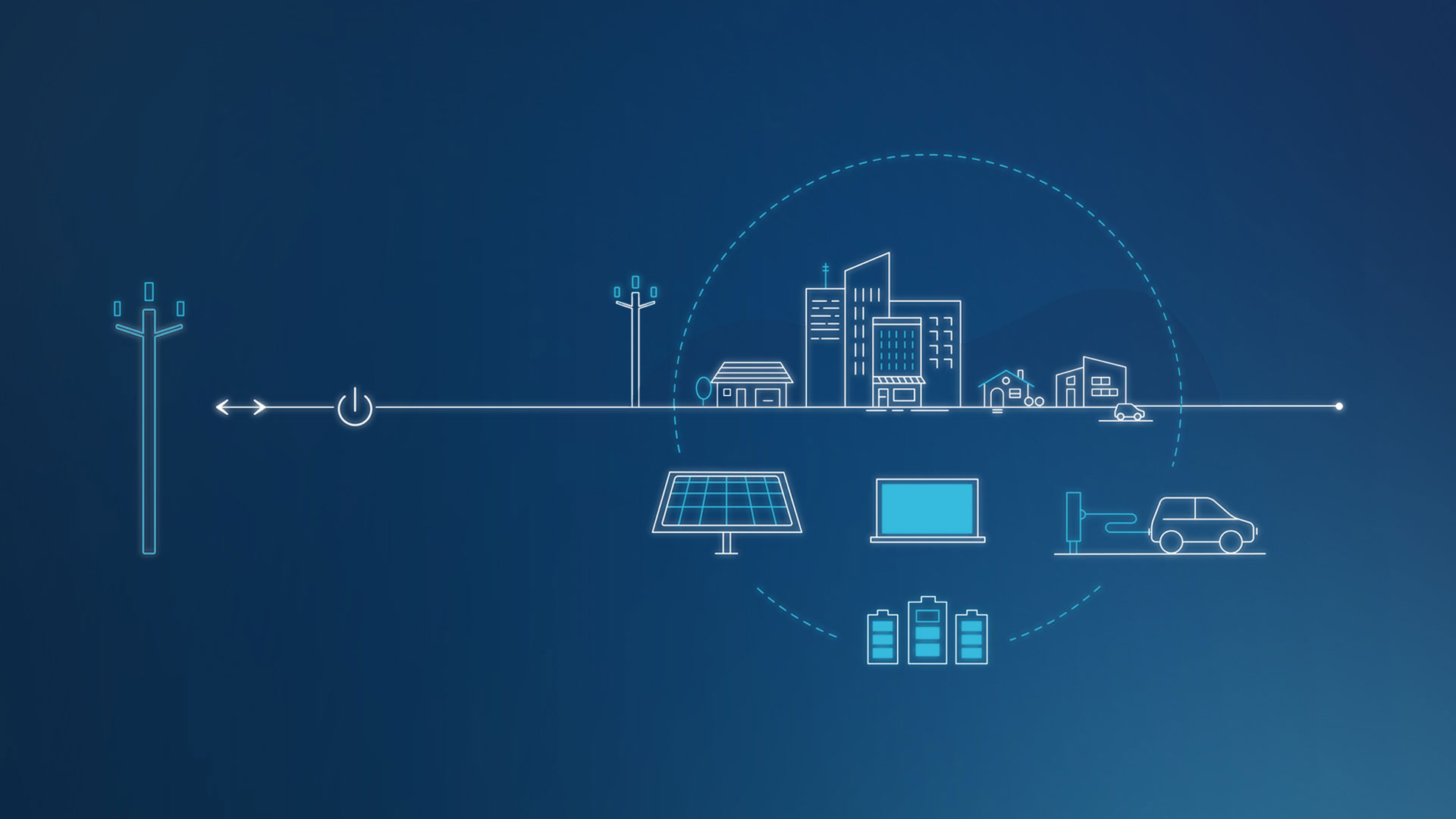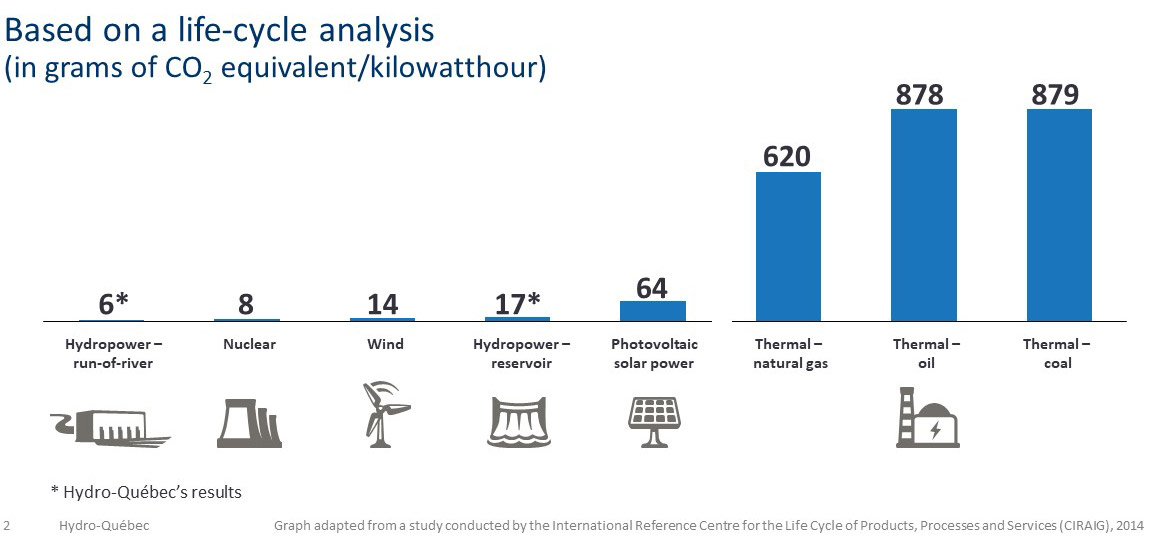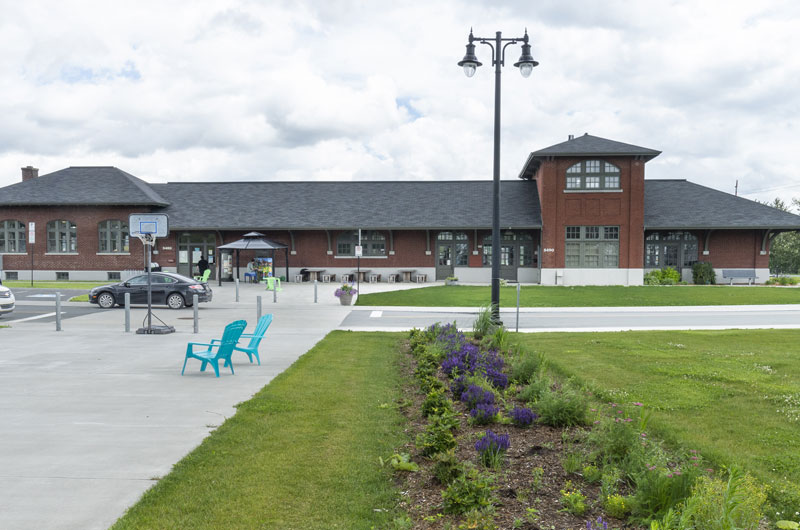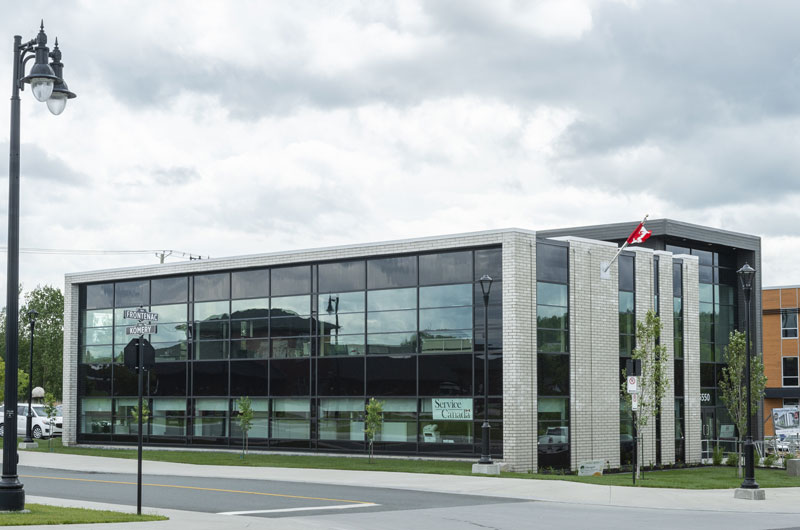Québec’s first microgrid – A source of pride
Following the July 2013 rail disaster, Lac‑Mégantic and its citizens decided to move away from fossil fuels, choosing instead to rally around a forward‑looking project in collaboration with Hydro‑Québec: Québec’s first electric microgrid, built to serve the heart of the city and inaugurated in 2021. This facility produces clean and renewable energy locally to meet the community’s needs. Thanks to the human energy invested in the Lac‑Mégantic microgrid and responsible energy use, the project can serve as an example. An example of the energy transition, of cooperation and resiliency.
Innovation at the service of an engaged community

The components of the microgrid include solar panels, energy storage units and tools to manage building energy use. A control system makes it possible to isolate the microgrid from Hydro-Québec’s main grid so that it operates independently, a principle known as "islanding".
The expertise acquired in Lac‑Mégantic will make it possible to deploy the parts of the model in remote power systems that, unconnected to the main grid, are currently fossil-fuel dependent. Transposing clean technologies onto these systems reduces greenhouse gas emissions while ensuring a sustainable energy supply for future generations.
The project also makes it possible to integrate decentralized energy resources into Hydro-Québec’s main grid.
Owners and users of the buildings targeted by the microgrid constitute a community of test subjects. Besides benefitting from the technologies in question, they’re in a position to share information on energy-saving practices and the challenges posed by the system.
Lac-Mégantic: Looking toward an innovative future
Following the July 2013 rail disaster and the destruction of its downtown core, Lac‑Mégantic faced multiple challenges: physical reconstruction, social rehabilitation and economic diversification, to name but a few. Yet, as early as 2014, Lac-Mégantic was already starting to bounce back and turn its gaze forward.
The reconstruction process was launched, and with it came a whole new vision of the district.
Birth of a partnership [in French]
As it entered the planning process, Lac‑Mégantic set itself the challenge of becoming a hub of innovation. At the same time, Hydro‑Québec was considering the energy transition and how it might best respond. The convergence of these two visions resulted in the microgrid, which was jointly developed over the months that ensued.
Hydro‑Québec would be the project’s lead proponent, supported by Natural Resources Canada.
An innovative undertaking
- The microgrid was designed in consultation with an engaged, forward-looking community that was willing to innovate and support sustainable development.
- Environmental conservation initiatives had been under way in the municipality for a number of years: the introduction of three-way waste collection in 1997; the opening of the International Dark Sky Reserve in 2007; and the promotion of active transportation in 2016.
- The vision of a downtown core rebuilt based on the principles of sustainable development was in sync with the spirit of the project.
- Mobilizing the community fostered active participation in the energy transition.
A reaffirmed vision
- The town’s 2020–2025 strategic plan, with its focus on making Lac-Mégantic an eco-friendly technological showcase and its newly formed CITÉ (Commission for innovation and ecological transition), has taken shape with the microgrid.
Hydro‑Québec: Leader of the energy transition
Hydro‑Québec is fully engaged in the energy transition through its:
- Energy output, which is over 99% clean and renewable
- Energy efficiency programs that encourage people to stop wasting power and adopt energy-saving behaviors
- Contribution to transportation electrification
However, given that nothing can ever be taken for granted, Hydro‑Québec continues to innovate to keep apace with customers’ needs and steer the power system into the future.
Hydropower: The Québec advantage
Always available and stable, our hydropower gives us an undeniable advantage in the race for clean energy.
We are one of the world’s largest producers of an energy option that is among the lowest in GHG emissions.
GHG emisssions by generating option

Solar power: A strategic addition to our grid
There are many ways of generating clean and renewable energy. Hydropower is a key option. Other renewables like solar power are gaining ground, despite their intermittency and the associated storage and integration challenges.
The keys to the energy transition
The energy industry is undergoing a period of intense change. What are the keys to the energy transition?
- The phasing out of fossil fuels in favor of renewables like wind, wave and solar
- Responsible energy use through the adoption of an energy-efficiency mindset (elimination of waste/optimized power consumption)
This was the context surrounding the development of the LacMégantic microgrid.
What is a microgrid?
An electric microgrid:
- is a community-centered initiative
- meets the needs of local users
- consists of interconnected components for:
- energy generation
- energy storage
- energy management and control
Anticipated advantages
These will vary based on the host community:
- A reliable electricity supply
- Energy savings and optimized budgets
- Optimized power generation, energy demand and load management
- The diversification of renewables
How does a microgrid work?
Watch the video to learn more about microgrids.
Click on Operation for more information.













